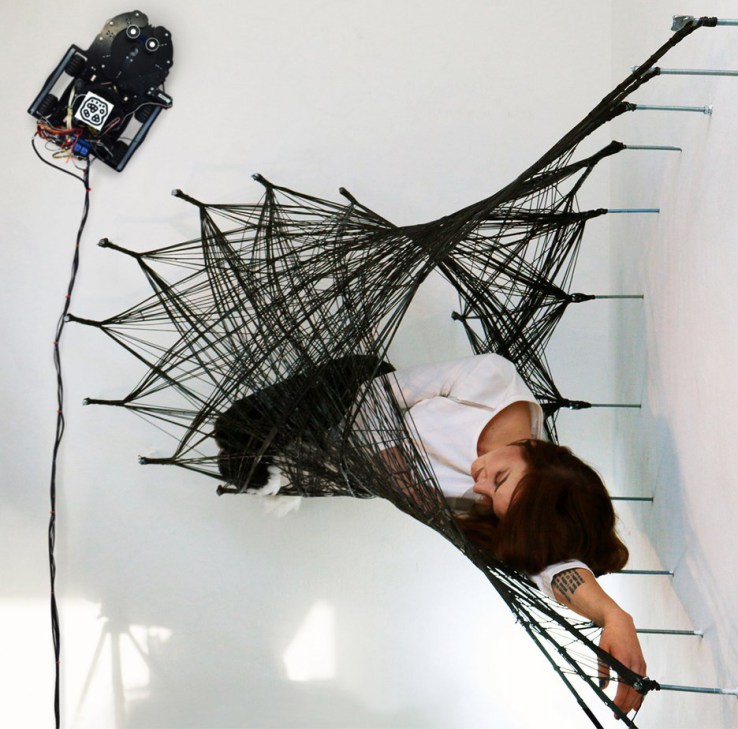

Normally, the notion of setting a pair of spiderbots free in your house would seem alarming. But if you knew that they were weaving you a strange and mathematical hammock while you were gone? Suddenly that fear turns to wonder — and eventually, a nap.
The Mobile Robotic Fabrication System for Filament Structures was developed at the University of Stuttgart’s Institute for Computational Design. The concept behind it is “swarm construction”: many small robots working together to produce a single item. In this case, the bots are like wall-hugging Roombas weaving a carbon fiber nook that looks like it sprang fully formed out of a Spirograph. This project in particular was built on the work of ICD graduate student Maria Yablonina.
“We are only at the very beginning of exploring the true architectural potential of this fabrication system,” ICD director Achim Menges told Dezeen. “But we are convinced that its main advantage is that you can build entirely new structures that would be impossible to materialize otherwise.”
It is, at the very least, very cool to watch. The robots have spools of carbon fiber thread that they pass back and forth after affixing to points on the wall, like two hands putting together a cat’s cradle. (“See the cat? See the cradle?”)
Being able to crawl along the walls and interact with one another in swarm fashion could indeed produce some truly unique structures and utilize spaces in quite a different way.
Menges is inspired by nature’s economy and ingenuity; his team has based buildings on insect and lobster shells, and the bots described here clearly are influenced by arachnids and other silk-weaving animals. (There’s an amazing episode of Life in the Undergrowth dedicated to them, incidentally, which you should watch.)
The plan now is to increase the number of robots and allow them to maneuver and attach the fibers to other surfaces, like ceilings or curved walls. That should allow for even more unusual creations. Whether you’d want to live or work in a mind-warping expanse of black yarn, of course, is a separate question altogether.
Featured Image: University of Stuttgart

